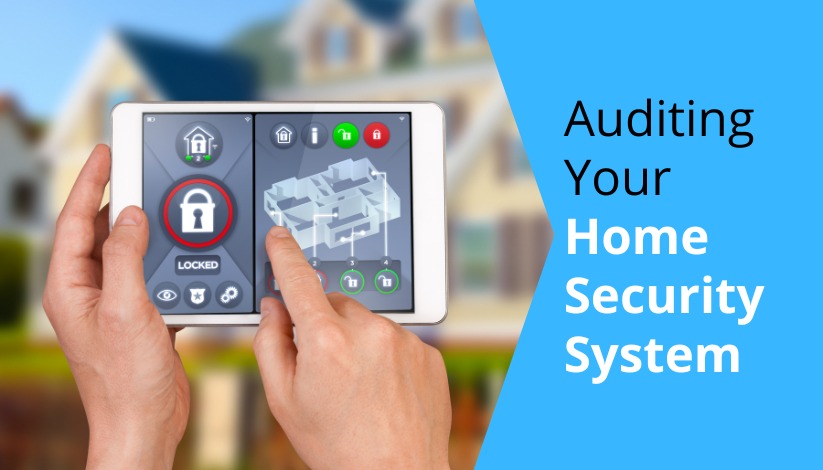A Guide to Auditing Your Home Security System
Ensuring the security of your home is a continuous process that involves regular assessment and upgrades of your security systems. As technology evolves, so do the methods employed by potential intruders. Therefore, it is crucial to periodically audit your home security system to identify vulnerabilities and make necessary improvements. This comprehensive guide will walk you through the steps and considerations for auditing your home security system effectively.
A security audit involves a thorough examination of your existing security measures to evaluate their effectiveness in protecting your home. The benefits of conducting regular audits include:
- Identifying Weak Points: Uncovering vulnerabilities that may have been overlooked.
- Updating Security Measures:Ensuring that your system incorporates the latest security technologies.
- Improving Response Time: Enhancing the efficiency of your response to potential security breaches.
- Peace of Mind: Providing reassurance that your home is well-protected against threats.
Before starting the audit, it is essential to have a clear plan. Here are some preparatory steps:
Collect all relevant information about your current security system, including:
- System Components: List all the components of your security system, such as cameras, alarms, sensors, and access control devices.
- System Layout: Understand the layout of your security system, including the placement of each component.
- User Manuals: Have the user manuals and technical specifications for each component available for reference.
Define the goals of your security audit. Common objectives include:
- Evaluating System Performance: Assessing whether the current system meets your security needs.
- Identifying Vulnerabilities: Finding and addressing weaknesses in the system.
- Planning Upgrades: Identifying areas where upgrades or new technologies could enhance security.
Develop a checklist to ensure that all aspects of the audit are covered. The checklist should include:
- Physical Security: Assessing doors, windows, locks, and barriers.
- Surveillance: Evaluating the effectiveness of security cameras.
- Alarms and Sensors: Checking the functionality of alarms and sensors.
- Access Control: Reviewing access control systems and protocols.
- Cybersecurity: Ensuring the protection of digital systems and data.
With your preparations complete, it’s time to conduct the audit. Follow these steps to perform a comprehensive assessment:
Physical security is the first line of defense against intruders. Assess the following:
- Locks: Check all locks on doors and windows to ensure they are sturdy and functioning correctly. Consider upgrading to smart locks for added security.
- Reinforcement: Inspect doors and windows for any weak points. Reinforce entry points with security bars, deadbolts, and shatterproof glass.
- Visibility: Ensure that entry points are well-lit and visible from the street to deter intruders.
- Fencing: Inspect fences and gates for any signs of damage or weakness. Ensure they are tall and robust enough to deter climbers.
- Lighting: Evaluate outdoor lighting, especially around entry points and dark areas. Motion-activated lights can be particularly effective.
- Landscaping: Trim bushes and trees near windows and doors to eliminate hiding spots for potential intruders.
Surveillance cameras are crucial for monitoring activity around your home. Evaluate the following:
- Coverage: Ensure that all vulnerable areas, such as entry points, driveways, and backyards, are covered by cameras.
- Angles: Adjust camera angles to eliminate blind spots. Ensure cameras are positioned to capture clear images of faces and license plates.
- Resolution: Check that cameras provide high-resolution footage for clear identification.
- Night Vision: Ensure cameras are equipped with night vision to capture clear images in low light conditions.
- Recording and Storage: Verify that your recording and storage systems are functioning correctly. Consider cloud storage for secure and accessible footage.
Alarms and sensors play a vital role in detecting and deterring intrusions. Test the following components:
Access control systems help manage who can enter your home. Review the following aspects:
- Keyless Entry: Consider keyless entry systems, such as smart locks and biometric scanners, for enhanced security.
- Intercom Systems: Test intercom systems to ensure they allow you to verify visitors before granting access.
As homes become smarter, cybersecurity is an essential aspect of overall security. Assess the following:
- Wi-Fi Security: Ensure your home Wi-Fi network is secure with a strong password and encryption. Consider using a separate network for smart devices.
- Firewalls and Antivirus: Install firewalls and antivirus software to protect against cyber threats.
- Firmware Updates: Keep all smart devices, including security cameras and smart locks, updated with the latest firmware.
- Password Management: Use strong, unique passwords for all smart devices and security systems.
Prepare for emergencies by assessing the following:
- Local Authorities: Ensure you have the contact information for local police, fire departments, and emergency services readily available.
- Monitoring Services: Verify that your security monitoring service has your up-to-date contact information and emergency response plan.
- Evacuation Routes: Develop and practice evacuation routes for your home in case of an emergency.
- Safety Drills: Conduct regular safety drills with your family to ensure everyone knows how to respond in an emergency.
After completing the audit, it’s time to address any vulnerabilities and implement improvements. Here are some steps to take:
Based on your audit findings, upgrade your security systems to address identified vulnerabilities. This may include:
- Installing Additional Cameras: Add cameras to cover blind spots and enhance surveillance coverage.
- Upgrading Locks: Replace outdated locks with smart locks or high-security deadbolts.
- Enhancing Alarms: Upgrade your alarm system to include features such as remote monitoring and mobile alerts.
Conclusion
A home security system is never “set it and forget it.” It’s a living, evolving network that protects your loved ones and possessions. By auditing regularly and staying informed, you create not just a safer house—but a true haven.
Read more about our home safety tips or visit Alarm 24 Hours blog!